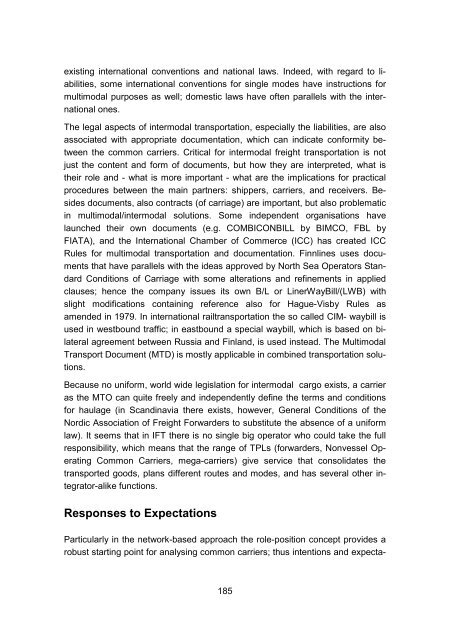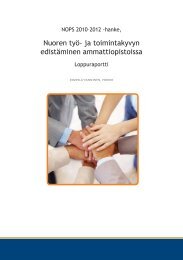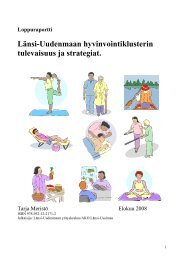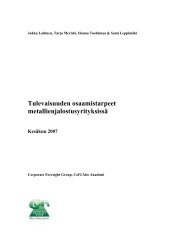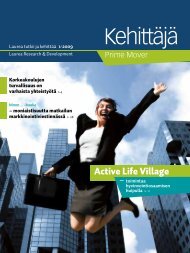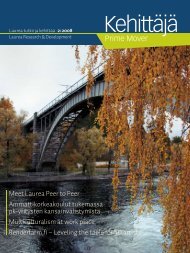849954 sisus
849954 sisus
849954 sisus
You also want an ePaper? Increase the reach of your titles
YUMPU automatically turns print PDFs into web optimized ePapers that Google loves.
existing international conventions and national laws. Indeed, with regard to liabilities,<br />
some international conventions for single modes have instructions for<br />
multimodal purposes as well; domestic laws have often parallels with the international<br />
ones.<br />
The legal aspects of intermodal transportation, especially the liabilities, are also<br />
associated with appropriate documentation, which can indicate conformity between<br />
the common carriers. Critical for intermodal freight transportation is not<br />
just the content and form of documents, but how they are interpreted, what is<br />
their role and - what is more important - what are the implications for practical<br />
procedures between the main partners: shippers, carriers, and receivers. Besides<br />
documents, also contracts (of carriage) are important, but also problematic<br />
in multimodal/intermodal solutions. Some independent organisations have<br />
launched their own documents (e.g. COMBICONBILL by BIMCO, FBL by<br />
FIATA), and the International Chamber of Commerce (ICC) has created ICC<br />
Rules for multimodal transportation and documentation. Finnlines uses documents<br />
that have parallels with the ideas approved by North Sea Operators Standard<br />
Conditions of Carriage with some alterations and refinements in applied<br />
clauses; hence the company issues its own B/L or LinerWayBill/(LWB) with<br />
slight modifications containing reference also for Hague-Visby Rules as<br />
amended in 1979. In international railtransportation the so called CIM- waybill is<br />
used in westbound traffic; in eastbound a special waybill, which is based on bilateral<br />
agreement between Russia and Finland, is used instead. The Multimodal<br />
Transport Document (MTD) is mostly applicable in combined transportation solutions.<br />
Because no uniform, world wide legislation for intermodal cargo exists, a carrier<br />
as the MTO can quite freely and independently define the terms and conditions<br />
for haulage (in Scandinavia there exists, however, General Conditions of the<br />
Nordic Association of Freight Forwarders to substitute the absence of a uniform<br />
law). It seems that in IFT there is no single big operator who could take the full<br />
responsibility, which means that the range of TPLs (forwarders, Nonvessel Operating<br />
Common Carriers, mega-carriers) give service that consolidates the<br />
transported goods, plans different routes and modes, and has several other integrator-alike<br />
functions.<br />
Responses to Expectations<br />
Particularly in the network-based approach the role-position concept provides a<br />
robust starting point for analysing common carriers; thus intentions and expecta-<br />
185


